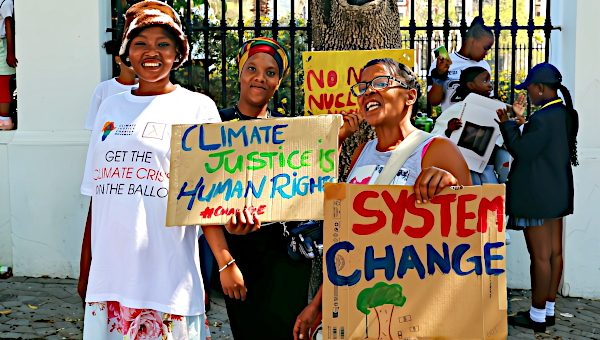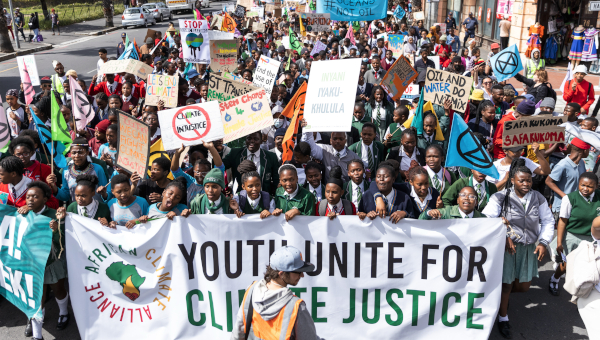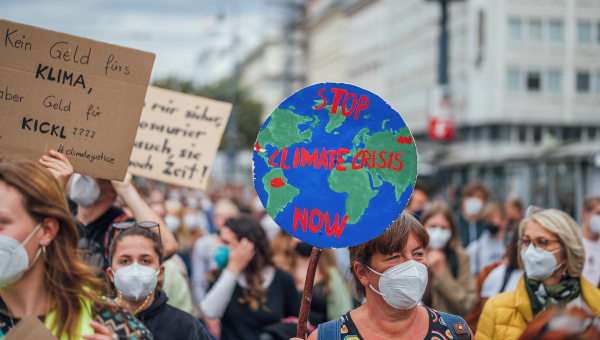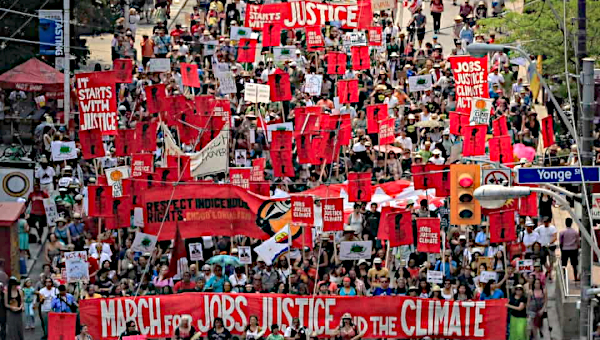The Eco Collapse We Were Warned About Has Begun
In 2023, different climatic anomalies have been recorded that set new historical records in the tragic progression of climate change at the global level. Thus, in June, the surface temperature in the North Atlantic reached the maximum increase of 1.3 degrees Celsius with respect to preindustrial values. In a similar direction – although in lower values – the average temperature of the seas at the global level increased. On the other hand, the retraction of Antarctic ice reached a new limit, reaching the historical decrease of 2016, but several months earlier in the middle of the cold season.
The combination of these records has led scientists who follow these processes to warn of the danger of a profound change in the currents that regulate temperature and life in the oceans and globally. The heat waves recorded on the coasts of a large part of the world – in Ireland, Mexico, Ecuador, Japan, Mauritania, and Iceland – may, in turn, be proof of this.
These phenomena, of course, are not limited to the seas. On Thursday, July 6, the global air temperature (measured at two meters above the ground) reached 17.23 degrees Celsius for the first time in the history of the last centuries, 1.68 degrees Celsius higher than preindustrial values; last June was already the warmest month in history. Meanwhile, temperatures on the continents, particularly in the North, also broke records: 40 degrees Celsius in Siberia, 50 degrees Celsius in Mexico, the warmest June in England in the historical series that began in 1884.
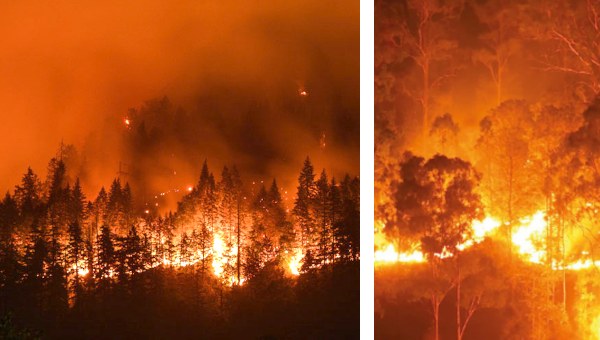
Higher Temperatures and Droughts
And its counterpart, droughts, such as the one plaguing Uruguay, where the shortage of fresh water since May has forced the increasing use of brackish water sources, making tap water undrinkable for the inhabitants of the Montevideo metropolitan area, where 60 percent of the country’s population is concentrated. This is a drought that, if it continues, could leave this region of the country without drinking water, making it the first city in the world to suffer such a catastrophe.
But the stifling heat and the droughts also bring with them voracious fires, such as the boreal forest fire that has been raging across Canada for weeks, with more than 500 outbreaks scattered in different regions of the country, many of them uncontrollable, and the widespread images of an apocalyptic New York darkened and stained red under a blanket of ashes.
This accumulation of tragic evidence, against all the denialist narratives, makes it undeniable that the climate crisis is already here, among us. It also indicates the absolute failure of the policies and initiatives adopted to reduce the emission or presence of greenhouse gases in the atmosphere. In this direction, in May of 2023, the levels of carbon dioxide (CO2) measured at NOAA’s global reference observatory in Hawaii reached an all-time high of 424 parts per million (ppm), becoming more than 50 percent higher than before the beginning of the industrial era and, those of the period January – May 2023, 0.3 percent higher than those of the same period of 2022 and 1.6 percent compared to that of 2019. According to the latest report of the United Nations Intergovernmental Panel on Climate Change (IPCC), the global surface temperature has risen faster since 1970 than in any other 50-year period for at least the last 2,000 years, the same period in which international agreements and national initiatives to combat the causes of climate change were deployed. The failure of these policies is also reflected, in our present, in the persistence and strength of a fossil capitalism and its plundering and socio-environmental destruction.
Not only have these so-called mitigation policies failed, but also the so-called adaptation policies aimed at minimizing the foreseeable impacts of climate change are weak or even absent.
In the same vein, the annual report of the World Meteorological Organization (WMO, Global Annual to Decadal Climate Update) released in May 2023 warned that it is very likely (66 percent probability) that the annual average global temperature will exceed 1.5 degrees Celsius in at least one year of the next five years (2023-2027), it is possible (32 percent probability) that the average temperature will exceed 1.5 degrees Celsius, and it is almost certain (98 percent probability) that at least one of the next five years, as well as the five-year period as a whole, will be the warmest on record; The IPCC has estimated serious consequences if this temperature is exceeded permanently.
El Niño
How close to this point will the arrival of the El Niño phenomenon place us this year and possibly in the coming years? El Niño is an event of climatic origin that expresses itself in the warming of the eastern equatorial Pacific Ocean and manifests itself in cycles of between three and eight years. With antecedents in the 19th century, in 1924 climatologist Gilbert Walker coined the term “Southern Oscillation” to identify it and in 1969 meteorologist Jacob Bjerknes suggested that this unusual warming in the eastern Pacific could unbalance the trade winds and increase the warm waters toward the east, that is, toward the intertropical coasts of South America.
But this is not simply a traditional meteorological phenomenon that recurs in irregular annual periods. It is not a natural phenomenon; however many attempts are made, time and again, to make invisible or deny its social causes. On the contrary, in recent decades, the dynamics of the climate crisis have increased both in frequency and intensity. Already in early 2023, the third continuous La Niña episode concluded, the third time since 1950 that it has extended over three years and with increasing intensity. Likewise, in 2016, El Niño led to the average temperature record reached by the planet. And different scientists estimate today that this Super El Niño may be repeated today with unknown consequences given the levels of greenhouse gases and the dynamics of the current climate crisis.
The banners of a change inspired by social and climate justice and the effective paths of this socio-ecological transition raised by popular movements are becoming more imperative and urgent today. It is possible to propose an emergency popular mitigation and adaptation plan. But to make these alternatives socially audible, to break with the ecological blindness that wants to impose itself, it is first necessary to break the epistemological construction that wants to inscribe these catastrophes, repeatedly and persistently, in a world of supposedly pure nature, in a presumably external field, alien and outside human social control.
This is a matrix of naturalization that, while excluding social groups and the mode of socioeconomic organization from any responsibility for the current crises, wants to turn them into unpredictable and unknowable events that only leave the option of resignation, religious alienation, or individual resilience. The questioning of these views is inscribed not only in the discourses but also in the practices and emotions, in responding to the catastrophe with the (re)construction of bonds and values of affectivity, collectivity, and solidarity – indispensable supports for emancipatory change. •
This article was produced by Globetrotter.


